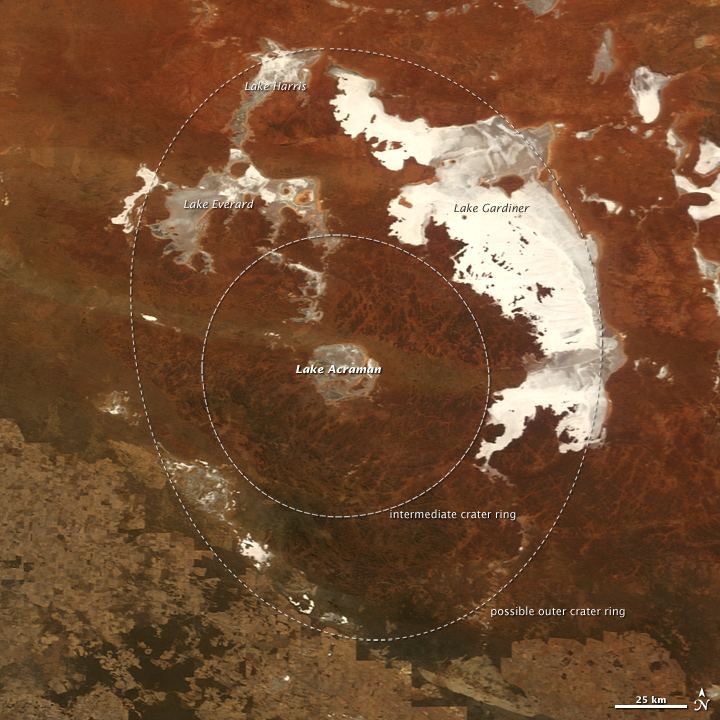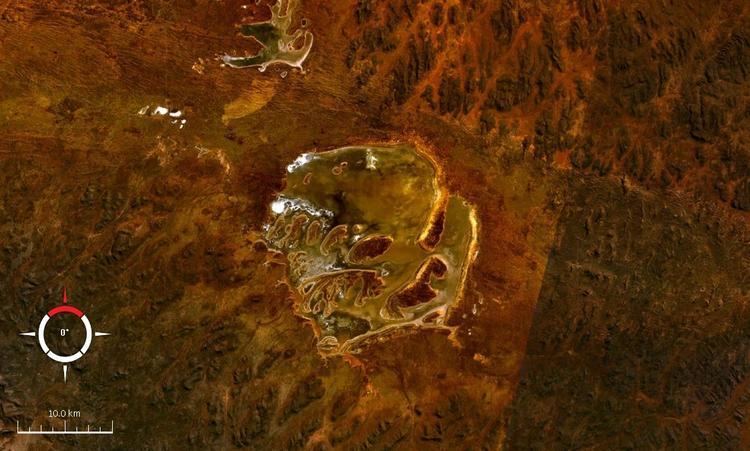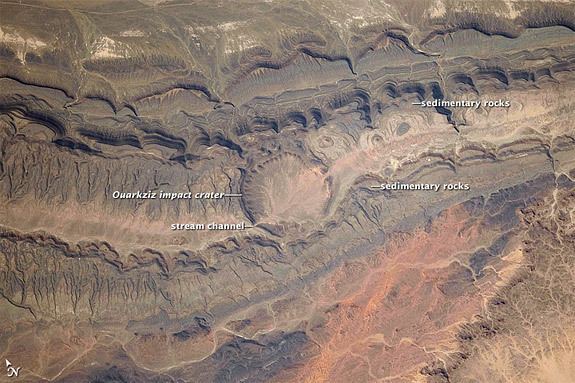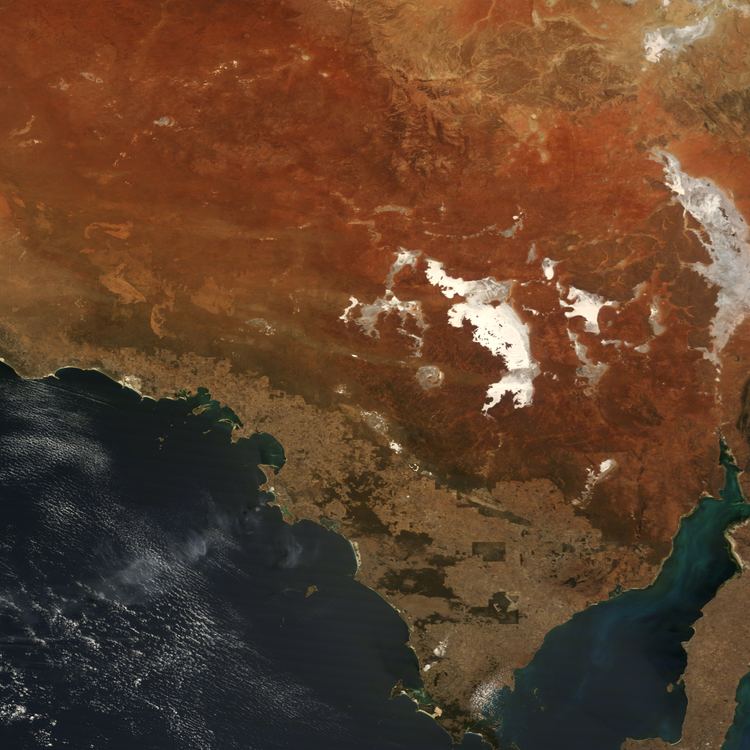 | ||
Acraman crater is a deeply eroded impact crater in the Gawler Ranges of South Australia. Its location is marked by Lake Acraman, a circular ephemeral playa lake about 20 km in diameter.
The discovery of the crater and independent discovery of its ejecta were first reported in the journal Science in 1986. The evidence for impact includes the presence of shatter cones and shocked quartz in shattered bedrock on islands within Lake Acraman.

The crater is deeply eroded and its original size must be inferred by indirect means. Some authors estimate an original diameter of up to 85–90 km, while other suggest a smaller size, perhaps only 35–40 km, closer to that of the depression in which Lake Acraman is centred. The larger size estimate would imply an energy release of 5.2 × 106 megatons of TNT.
The impact event is estimated to have occurred about 580 million years ago during the Ediacaran Period; this age is not derived from the crater itself but from the position of ejecta within nearby sedimentary basins.

The Lake Acraman Impact Structure is listed on the South Australian Heritage Register.
Ejecta layerEdit

A widespread layer of ejecta, believed to be from the Acraman crater, is found within Ediacaran rocks of the Flinders Ranges at least 300 km east of the crater, and in drill holes from the Officer Basin to the north. At the time these areas were shallow sea, and the ejecta settled into mud on the sea floor. The ejecta contains shocked minerals and small shatter cones, is composed of rock similar in age and composition to that at the crater, and is associated with an iridium anomaly suggesting contamination with extraterrestrial material. An evolutionary radiation within marine microorganisms (acritarchs) occurs just above the level as the ejecta layer, and some authors believe there may be a connection. The proximity of the crater to the type area for the Ediacara Biota is noted, though probably not significant given the likely global consequences of the impact.
